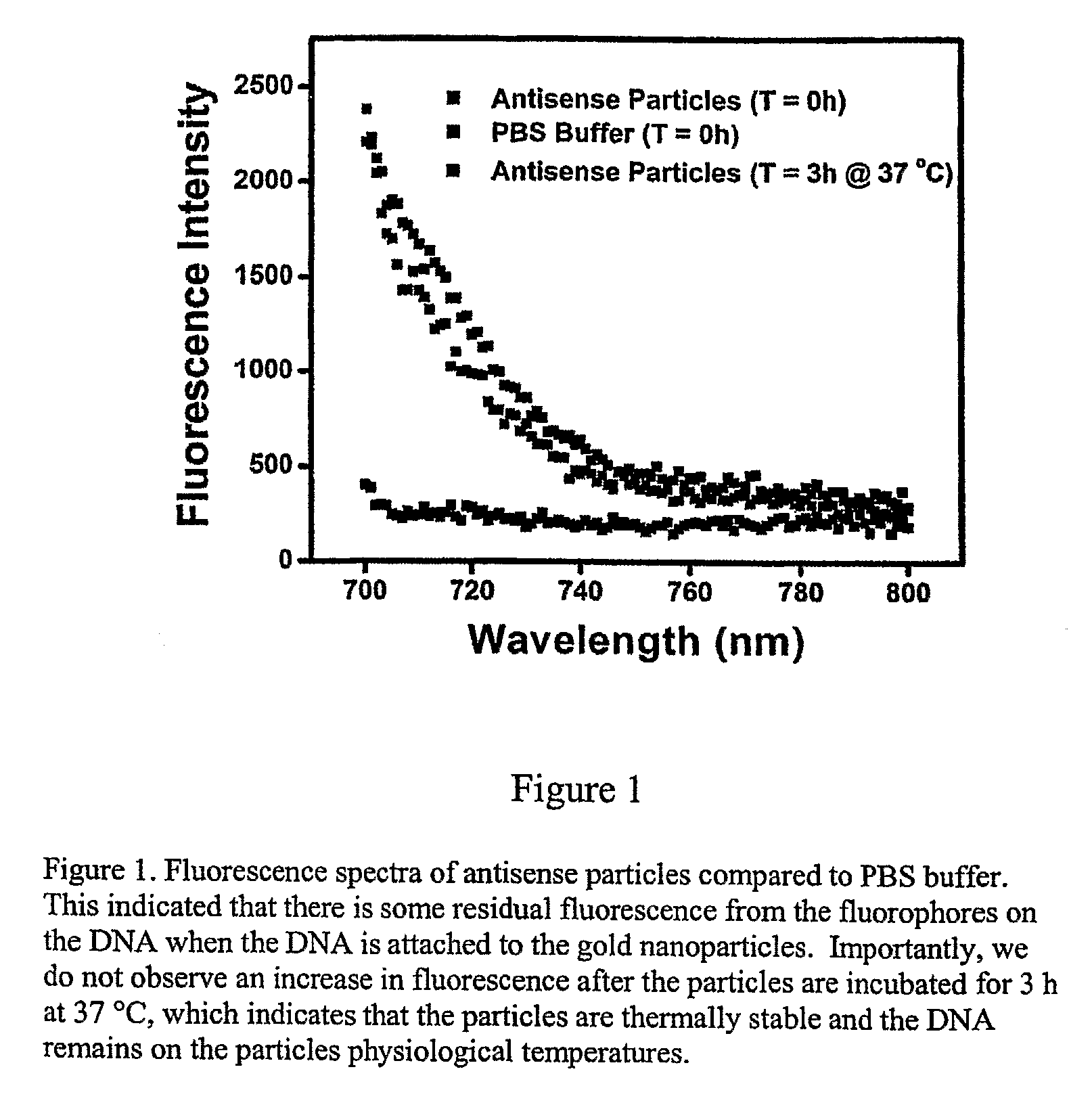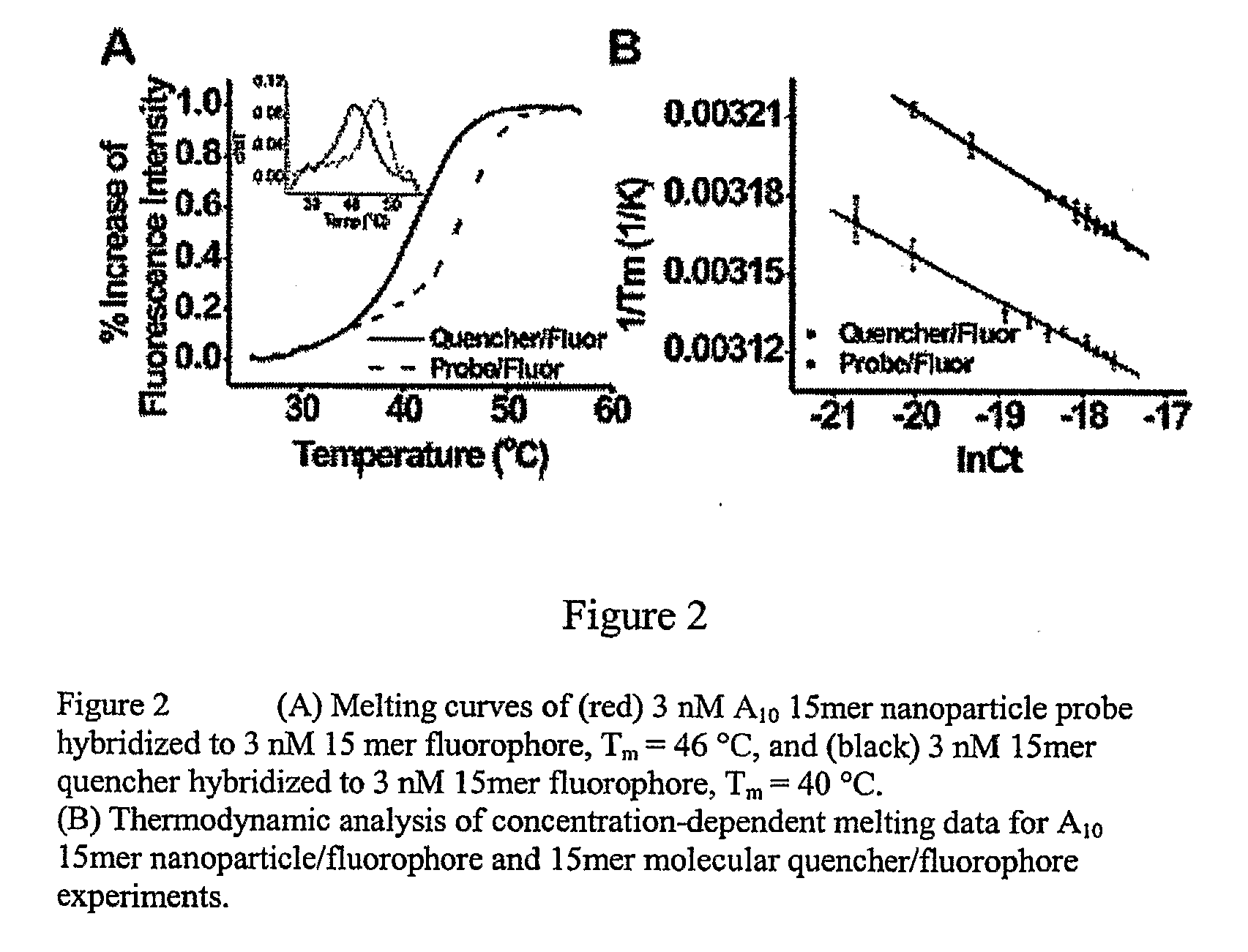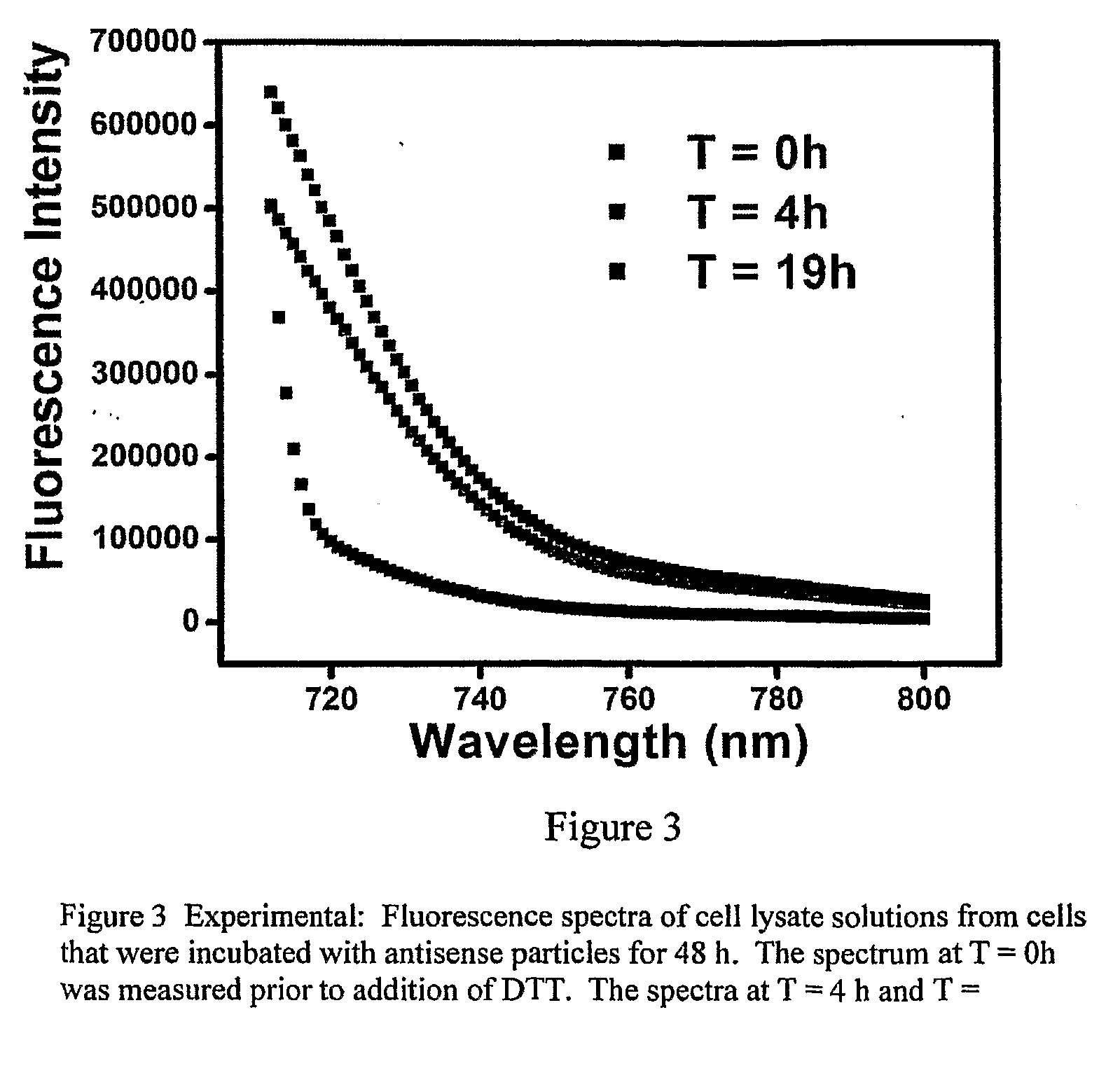Nucleic Acid Functionalized Nanoparticles for Therapeutic Applications
a technology of functionalized nanoparticles and nucleic acids, applied in the field of nucleic acid functionalized nanoparticles for therapeutic applications, can solve the problems of limiting the general utility and therapeutic potential of single systems, unable to find one that is vastly superior to others, and low efficacy, so as to increase the resistance of oligonucleotide, increase the strength of binding, and increase the resistance
- Summary
- Abstract
- Description
- Claims
- Application Information
AI Technical Summary
Benefits of technology
Problems solved by technology
Method used
Image
Examples
example 1
A. Preparation of Gold Nanoparticles
[0125]Citrate-stabilized 13 nm gold nanoparticles were prepared by reduction of HAuC14 with citrate as described in Frens, Nature Phys. Sci., 241, 20 (1973) and Grabar, Anal. Chem., 67, 735 (1995). Briefly, all glassware was cleaned in aqua regia (3 parts HCl, 1 part HNO3), rinsed with Nanopure H2O, then oven dried prior to use. HAuC14 and sodium citrate were purchased from Aldrich Chemical Company. An aqueous solution of HAUC14 (1 mM, 500 mL) was brought to a reflex while stirring, and then 50 mL of a 38.8 mM trisodium citrate solution was added quickly, resulting in a change in solution color from pale yellow to deep red. After the color change, the solution was refluxed for an additional fifteen minutes, allowed to cool to room temperature, and subsequently filtered through a Micron Separations Inc. 0.45 micron nylon filter. Au colloids were characterized by UV-vis spectroscopy using a Hewlett Packard 8452A diode array spectrophotometer and by ...
example 2
[0128]A. Detachment of Oligonucleotides from the Nanoparticles InVitro
[0129]At the surface packing densities of oligonucleotides attached to gold nanoparticles in the manner described in Example 1, fluorophores attached to the 5′ ends of the oligonucleotides are in sufficiently close proximity to one another as to cause their fluorescence to be partially quenched via intermolecular interactions. Detachment of such fluorophore-labeled oligonucleotides from the nanoparticle from the particle abrogates this fluorescence quenching and will, therefore be manifested as an increase in fluorescence. FIG. 1 shows the fluorescence spectrum of oligonucleotide-coated gold nanoparticles that have been suspended in phosphate-buffered saline (PBS) buffer at 37° C. The emission maximum of the Cy5.5 fluoropbore is approximately 707 nm. The spectra shown in FIG. 1 represent the long-wavelength side of the 707 nm (nominal) Cy5.5 emission peak where changes in emission intensity are most readily detect...
example 3
[0132]The ability of the antisense nanoparticles of the present invention to enter into cells was demonstrated by incubating cultures of NIH-3T3 or 066 cells in Dulbecco's Modified Eagle Medium (DMEM) with 4.5 g / L glucose, 1.5 g / L sodium bicarbonate, and supplemented with 10% fetal bovine serum and 0.2 mg / ml G418 with antisense nanoparticles (100 nM; 100 μL) prepared as described in Example 1 for 24 hours at 37° C. and imaging by confocal microscopy (Zeiss Laser Scanning Microscope). The lower left panel in FIG. 5 is a transmitted light image of Nih-3T3 cells after 24 hour incubation with antisense nanoparticles. The upper left panel shows an image of the same cells acquired at 707 nm, the red fluorescence indicating the presence and localization of the antisense nanoparticles in the cell cytoplasm. The upper right panel shows the cells imaged at 540 nm, a wavelength band corresponding to the fluorescence emission from the EGFP produced by the cells. As described in a subsequent exa...
PUM
| Property | Measurement | Unit |
|---|---|---|
| Fraction | aaaaa | aaaaa |
| Fraction | aaaaa | aaaaa |
| Fraction | aaaaa | aaaaa |
Abstract
Description
Claims
Application Information
 Login to View More
Login to View More - R&D
- Intellectual Property
- Life Sciences
- Materials
- Tech Scout
- Unparalleled Data Quality
- Higher Quality Content
- 60% Fewer Hallucinations
Browse by: Latest US Patents, China's latest patents, Technical Efficacy Thesaurus, Application Domain, Technology Topic, Popular Technical Reports.
© 2025 PatSnap. All rights reserved.Legal|Privacy policy|Modern Slavery Act Transparency Statement|Sitemap|About US| Contact US: help@patsnap.com



